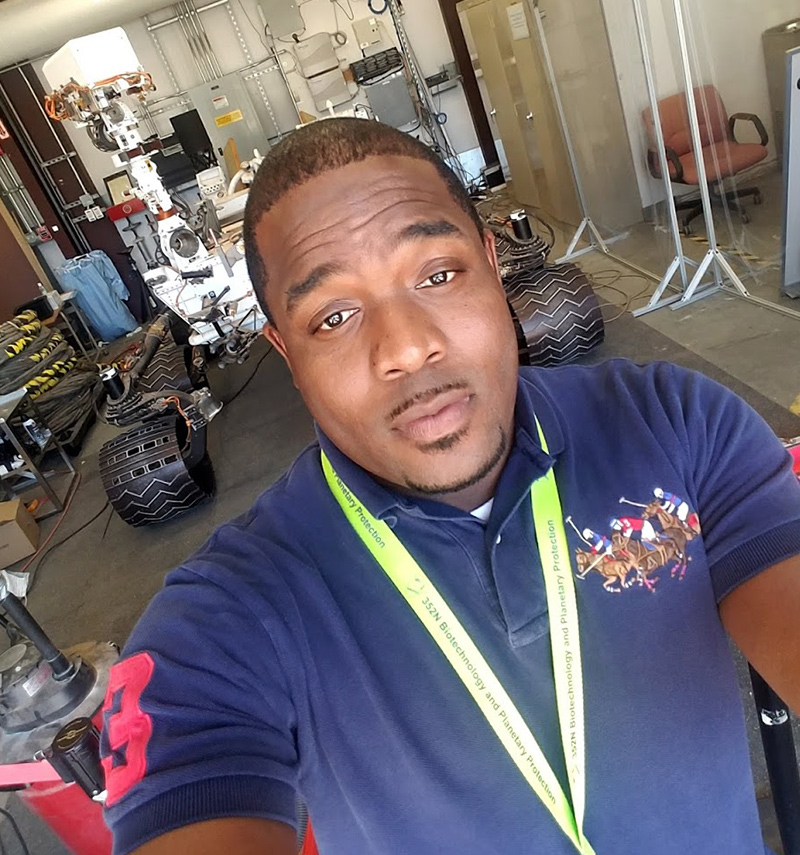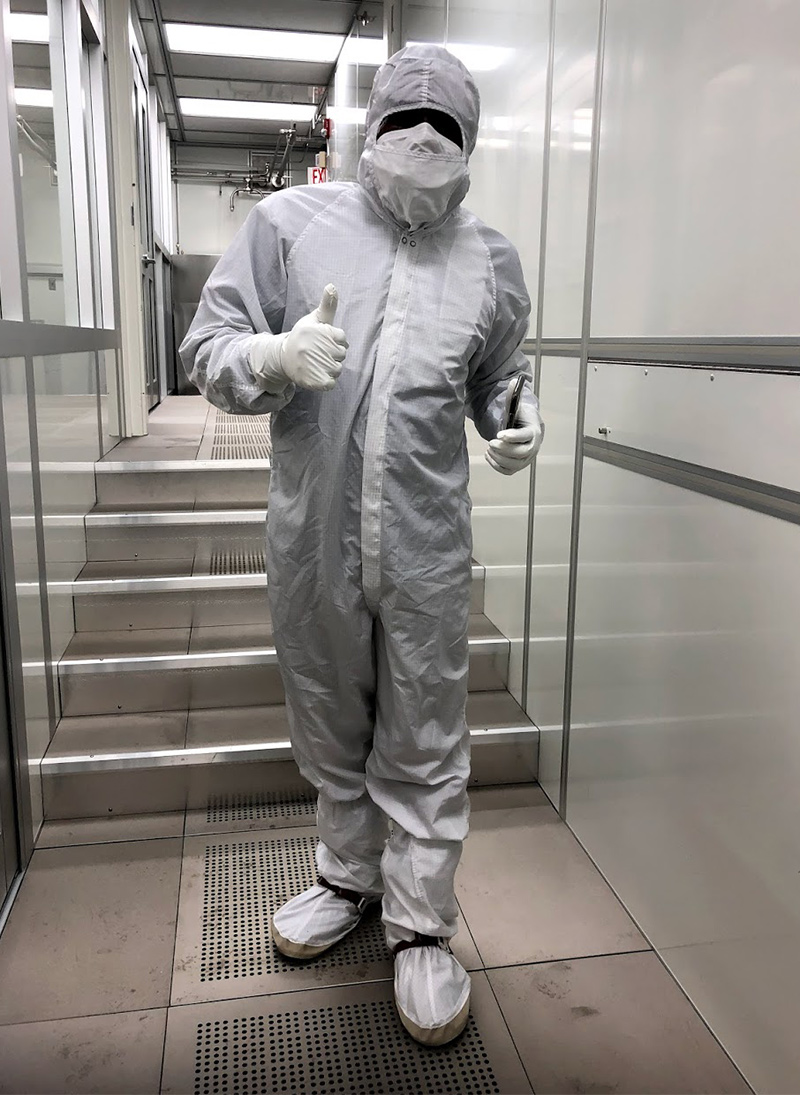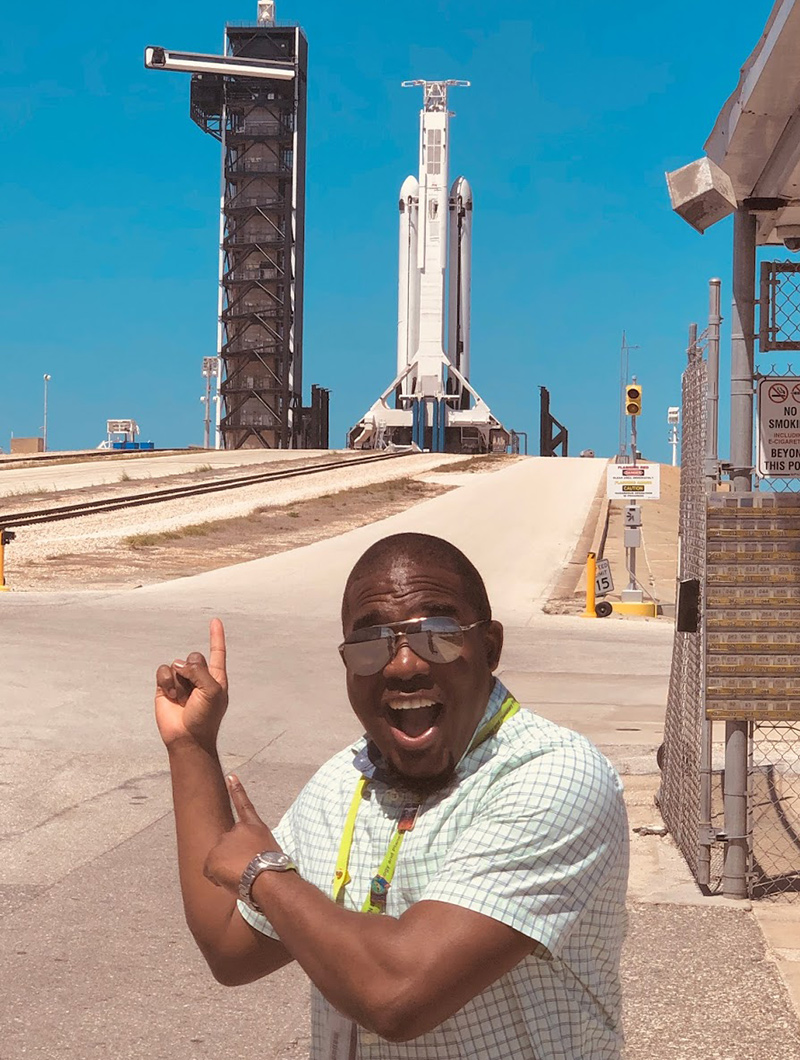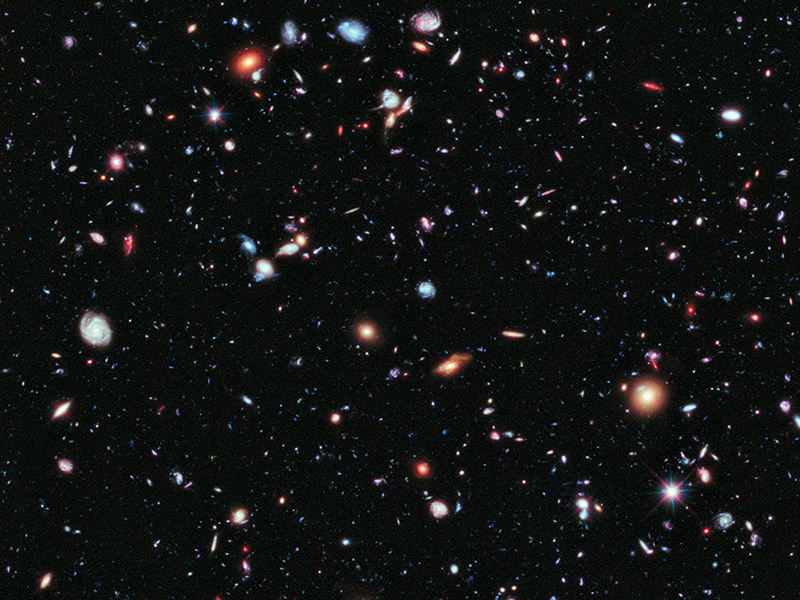
Dr. Alvin Smith
Planetary Protection Engineer for Mars Sample Return | Manager of Planetary Protection Center of Excellence - NASA's Jet Propulsion Laboratory (JPL)
Miami Killian Senior High School
Howard University, Washington, D.C.
Ph.D. in Medical Microbiology
B.S. in Science
Talladega College, Talladega, Alabama
Alpha Phi Alpha Fraternity , Sigma Pi Phi Fraternity, American Society for Microbiology, American Society for Virology, Beta Kappa Chi National Science Honor Society, Boy Scouts of America, Scoutmaster (2010)
Dr. Alvin Smith fell in love with space and science as a boy looking up at the night sky at his home in Miami, Florida. His mother gave him a book about the planets, and he went to a space camp. But he took a different path when he went to college and studied to go to medical school. He tells us how he found his way back to his passion, and how his spam filter delayed the launch of his career at JPL.
My interest in space and science goes back to when I was six years old. I would lie on the ground in my backyard in Florida and look up at the stars and at the Moon. I wondered what was going on up there, and I would think about how amazing it was. My mother bought me a small book that had a bunch of information on the planets. That’s when our solar system had nine planets instead of eight – with dwarf planet Pluto being one. I learned all about the planets. Then when I was nine, I went to a space camp in Titusville, Florida. That was a wonderful experience. It gave me great insight into working and living in space. Those were the beginnings that kicked off my passion for space and science.

It was not a linear path because my background is so diverse. I was actually gearing up for medical school. I was in graduate school, and my direction was medicine and biomedical research.
After my time at space camp, I was excited about space, but one thing that I did not see in my life was a lot of African Americans who worked in engineering. There were wonderful examples like NASA astronaut Dr. Ronald McNair and there were other Black astronauts, but these weren't the people I saw every day. I saw my family, my pastors, and my doctors.
I was born prematurely, so I was always at doctors’ offices and hospitals when I was growing up. The major influence in my life was medicine and research, so I put space on the back burner. Instead, I pursued a career in medicine and vaccine research. I worked in biodefense to help prevent, identify, and manage attacks using bioweapons such as Ebola, smallpox, and HIV in high-containment laboratories.
Around midlife – a midlife crisis if you will – I wanted to find my passion again. I felt stagnant in the work that I was doing. I wanted to get back to science. I was living in D.C. and working as a middle manager, a project manager, and a consultant – but I wanted to be a scientist. I took a deep breath, and I thought about what was important to me. I looked back to my childhood, and I remembered that it was space. But geez, I'm 38 years old. What am I going to do in space now?
I did a Google search and typed in the two things that I've always loved: microbiology and space. A job at JPL popped up for a planetary protection engineer. I had no idea what that was. I did some research to understand the job, and it seemed to be an amazing fit. Then a position popped up to manage the Planetary Protection Center of Excellence that they were creating at JPL, and also to be a technical lead on the planned Mars Sample Return Campaign (MSR). This seemed like a great opportunity to leverage both the science part of my career and the management side.
I was intrigued. I applied, but I didn't hear anything for a while. About a month or so later, I received a phone call from JPL Human Resources (HR). I had just landed in an airplane and switched my phone on, and then it started to ring with an area code that I did not recognize. I answered it and it was HR. They had been sending me emails, but they were going to my spam folder. They said, "Hey, we've been trying to get in contact with you for a month. Are you still interested?" And I said, "Yes, absolutely!"
They flew me out for interviews. I was still on the fence because I am an East Coast kid and JPL is on the West Coast in Pasadena, California. I thought, "Well if anything, I'll just go for the great trip out there to California." I went to JPL and I fell in love immediately. By the end of the first day of interviews, I knew that was the decision that I had to make and I have not looked back since. I joined JPL in November 2017, and I moved to California in January 2018.

I wear two hats. The first hat is managing the Planetary Protection Center of Excellence at JPL. Planetary protection is the discipline of making sure we preserve the science on our missions, and making sure that we protect the Earth from any potential hazards in the samples that we might bring back from elsewhere in the solar system.
We build our hardware and we build spacecraft to be as clean as possible. This is why you see the engineers dressed in what we call “bunny suits,” or clean room garb that covers most of our bodies. We’re wearing gloves and face masks to ensure we’re not shedding any skin or other contaminants on the hardware. We're always working to prevent contamination of the hardware, and also the planetary body that we seek to explore. So if it's Mars or Venus – if we find remnants of life – we want to make sure that it's actually coming from these worlds, and it isn’t something that we inadvertently left behind. That's what we call forward planetary protection.
Backward planetary protection means that as we prepare for the Mars Sample Return missions – seeking to return pristine samples from Mars to Earth – we want to make sure we don’t inadvertently release any Mars biology into our own biosphere. I'm researching, making connections, and networking to make sure that we're at the leading edge when it comes to implementing state-of-the-art technology. I also advocate to leaders to make sure we have the best equipment, and that our team is well-trained. I partner with universities to make sure we use the best technology.
There's also a lot of outreach. We share what planetary protection is with the public using our team members, our website, flyers, and fact sheets. We want to make sure that the public understands what we're doing.
The other hat I wear gives me the opportunity to be more scientific. I'm the lead for backward planetary protection on Mars Sample Return. We are looking into sterilization techniques and things like that. I'm also working on designing a laboratory where we can house those samples when they come to Earth.
There are a lot of scientific discussions about this that I've helped lead. We're all preparing for the day that we can bring these samples back. It's really fun. I think all of my years of working other jobs have been helpful in understanding the best way to contain the samples and to sterilize them if needed.

Follow your passion, even if your passion takes you in many different directions. As I've mentioned, my path was nonlinear, and I could have given up or settled. Keep that sense of wonder. Continue to follow what you're passionate about, and it'll eventually lead you to your happiness – your true happiness, your true joy in life.
My biggest challenge professionally was getting past my own self-doubt. I was a premature baby. I grew up in a single-parent home with just my mom. I had a stutter. I think people just counted me out. I had to overcome that, and I had to see myself in ways that only my mom or family saw me. I knew that I was more than what others saw. I had to hold onto that. So, my biggest challenge was keeping that fire going inside me, wanting to succeed not just for the sake of success – or to prove others wrong – but to succeed in a way that made my family proud and gave me a sense of joy.
After I left Howard University, I was thrust into a lot of places – conference rooms, board rooms, laboratories – where I was the only African American. I did a lot of self-questioning: “Am I supposed to be here?” Or, “Am I here just because people want to fill a quota?”
I had to realize that I had earned my spot, and I deserved to be here just as much as anyone else. Once I started to hold on to that, and to believe that, and to keep that fire for what I'm passionate about going, then the self-doubt dissipated.
My family is a big inspiration – from my mother to my older brother, who's an electrical engineer. As I started to matriculate through college, looking at him and seeing just how smart he became was certainly an inspiration.
Certainly, Dr. Ronald McNair was a huge inspiration throughout my career and even in school, where I was a Ronald McNair scholar. I received funding to pursue my scientific dreams based on a scholarship in his name. Now, I have an opportunity to be that light for other people.
Certainly, I also admire Dr. Martin Luther King, Jr. and his ability to deal with the stress of life at that time while remaining humble and steadfast. I would learn the speeches of MLK and perform them at oratorical contests in middle school, and I did that all the way through college. That helped me overcome stage fright and stuttering. I admire the perseverance and passion of MLK – those were the things that drove me.
So those were my giants and still are to this day. But I would say my family is right up there next to Dr. McNair and MLK.
I think the project that I love is Mars Sample Return. I've always looked up at Mars, and continue to do so through my telescope. So being a part of that mission and this historical moment is huge. This is my first mission, and I guess you never stop loving your first one.
I'm a Florida boy, so I love to be out there on the water catching fish. I love to be outside in nature. Being here in California, I really love being outdoors. I am also into gardening. These are passions that I share with my father. I love to travel as well. I would say probably the most amazing place that I've been, at least so far, has been Singapore.
I'm half Bahamian. I have a lot of family in the Caribbean, in the Bahamas, and in Nassau, so I love to visit the Caribbean.
The Hubble Deep Fields. I love just looking at these images and thinking about how vast the universe is, and how small we are in this whole giant universe. And if we are here understanding our place in the world – our existence – and we can build spacecraft and telescopes to help us understand that, then what's happening elsewhere in the universe? Imagine someone sitting somewhere on another planet having the same kind of conversation we are right now about space exploration.
Whatever we're dealing with on this planet, it seems so infinitesimal, right? We have to get beyond those little things in order to understand the larger picture of life.

Planetary science is a global profession.

